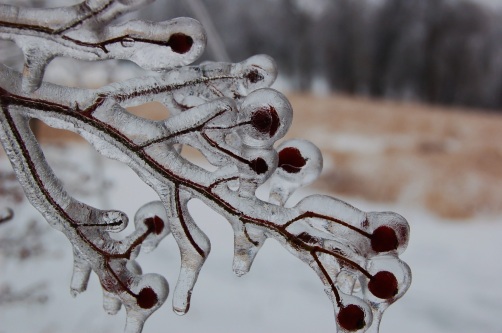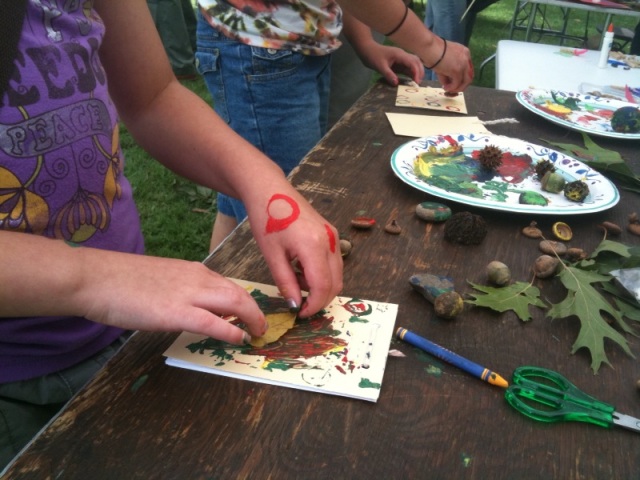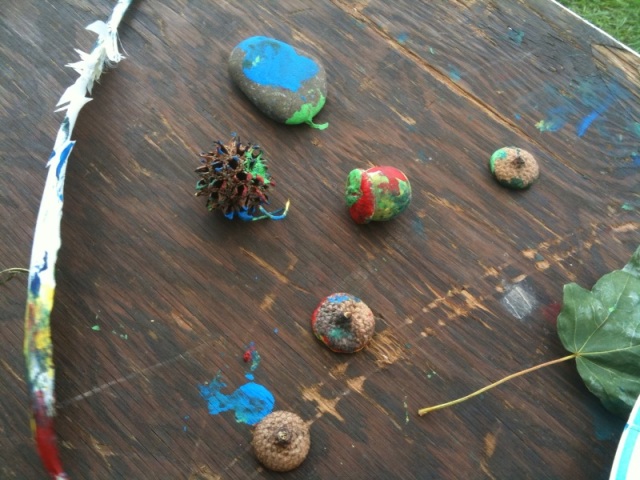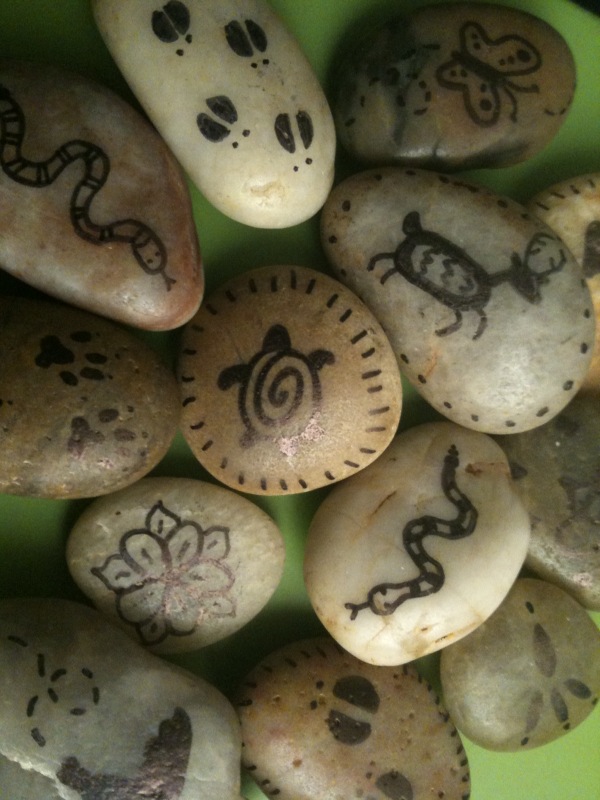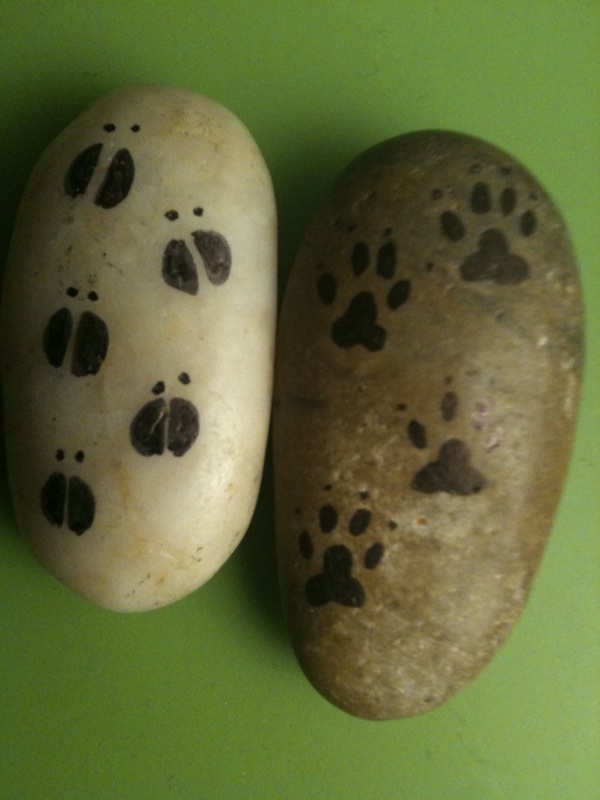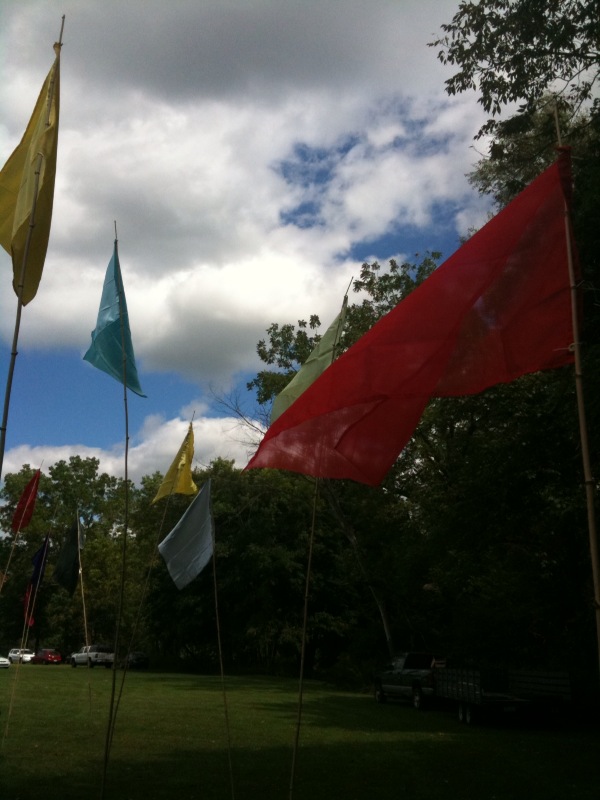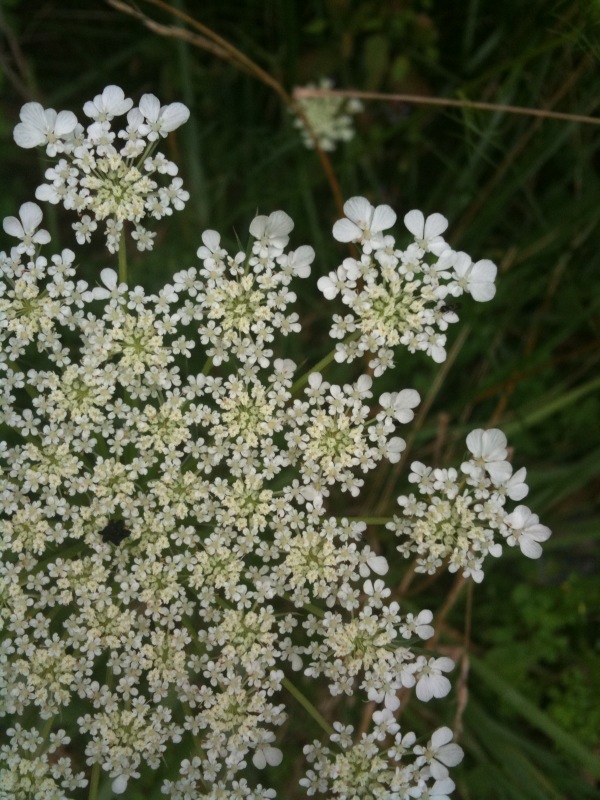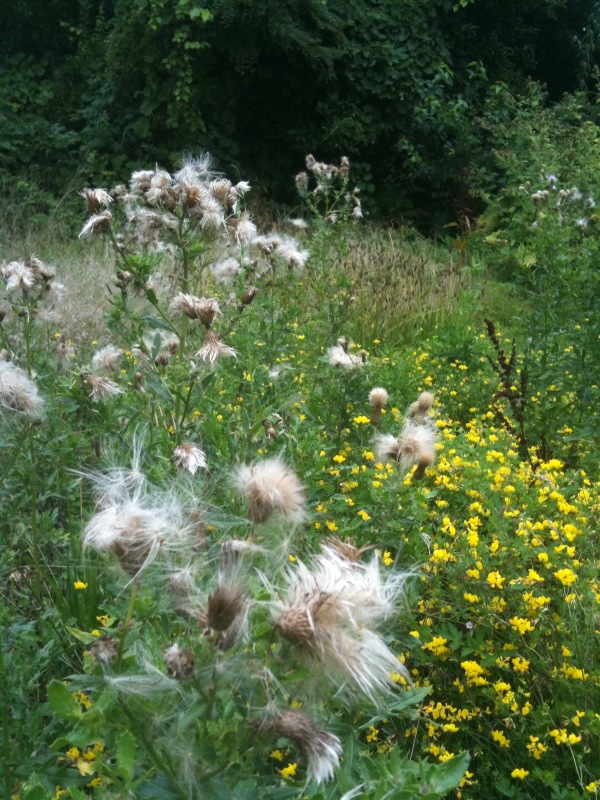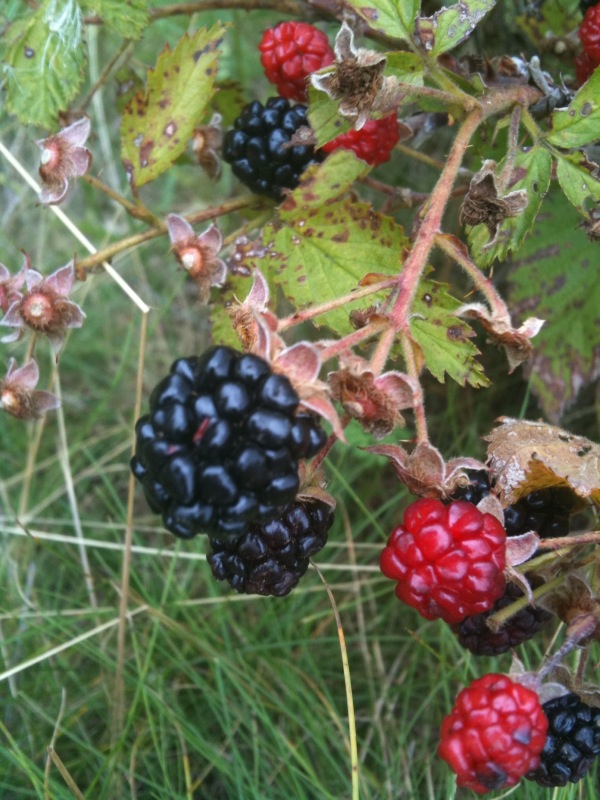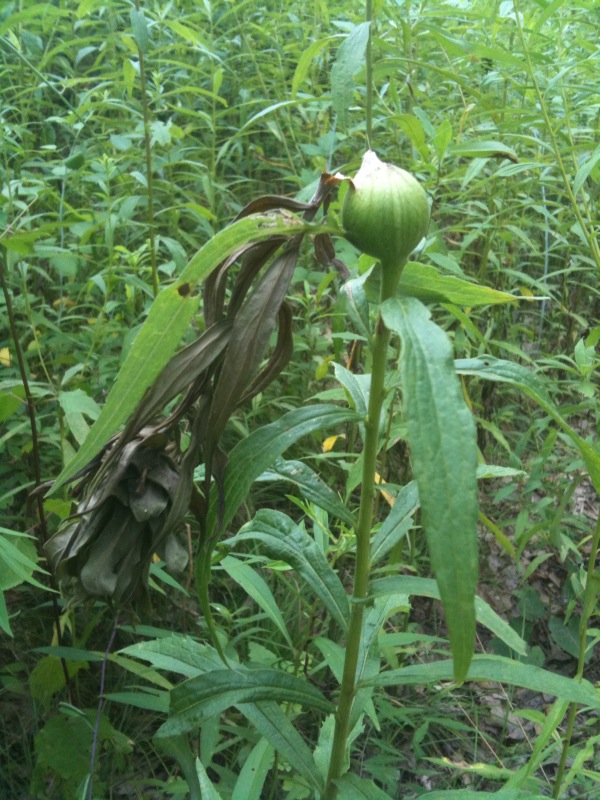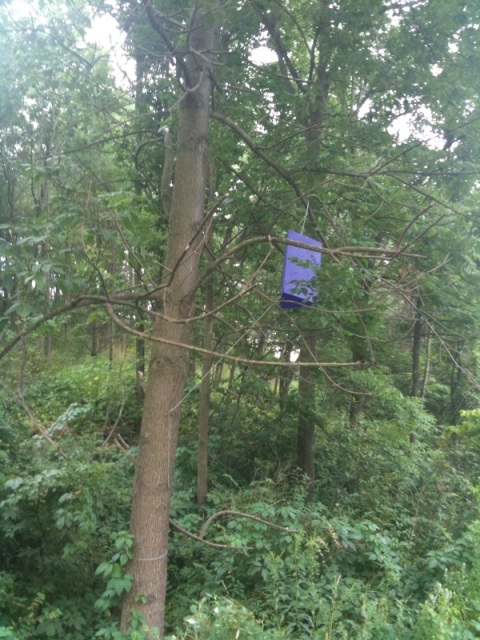.
All across the eastern United States trees are exploding into a collage of color–red, yellow, orange, sometimes all on the same leaf! The daily commute to work, to the bank, to the grocery store has become an expedition seeped in color and change. Wasn’t that oak tree green just yesterday? When did the air start filling up with all of these blushing leaves?
When I was younger my brother and I used to run around the backyard trying to catch leaves as they fluttered down in their erratic descent to the earth. I still remember the feeling of looking up at those trees–so tall, towering high above me, swaying with some kind of ancient rhythm, sending their leaves down upon us in a shower of treasure. Seeing the leaves change color and start to fall still fills me with excitement all these years later (and if a leaf happens to flutter near my while I am walking, I would be a fool not to try to catch it, right??). This excitement and wonder is something I hope to pass on to the kids I work with in the schools.
The way leaves change is an amazing process and, like all things in nature, one that we should understand and appreciate! I was recently asked by a 3rd grade teacher to come up with an activity that helped explain fall transitions and I have since done it with a variety of elementary school ages.
I am going to explain the way I do this activity with kids, but I hope you will read on even if you do not have any just to learn more about why leaves change color and fall every year! Also if you are working with kids, keep in mind that you might have to make this more or less complicated depending on your age group!
I recommend starting this activity–and your own learning process!–by giving kids a few minutes to search through the leaves and find one that they really like. I then have them come up with one thing they find beautiful about their leaf, and one question they have about it. I learned pretty quickly that just starting out with a complicated explanation of the process does NOT capture kids’ hearts and imaginations. Anyone can learn facts, but the most important thing you can give someone is a Love of nature, a Passion for it, and a Curiosity about what makes it work. If people have the Passion, learning naturally follows. The idea of having them examine the leaf first is that eventually they will start to ask questions about what made it the way it is, and will want to know what I am about to tell them, rather than me just telling them they should.
It is difficult to explain why the leaves change without first explaining the very basics of photosynthesis. I like to do this using a small whiteboard I can carry around outside–I started using this a little over a year ago and now always take it with me–most kids find it helpful to have a quick picture drawn to explain concepts and I like having that option no matter where I am. First, I draw a tree with one big leaf, explaining that what I draw for that leaf represents what happens to all the leaves on the tree.
.
 .
.
Next I ask kids how we, humans, get energy–by eating food! Do trees have mouths to eat food? They do not, so they have to make their own energy. I explain that they use the sun for energy, and also water, drawing as I go. I show that water can come from the roots of the tree, and also can move in and out of a leaf.
.
 .
.
I explain that the part that makes the leaves green (chlorophyll) uses sunlight to turn water and carbon dioxide into oxygen and sugars (glucose). The tree can then use these sugars as food! To help them understand this (and tie into the game we do next) I colored a clothes pin green and glued a magnet on the back so it sticks to my board. I put it in the center of the leaf, explaining that it represents the chlorophyll.
.
 .
.
I then show the sunlight coming from the sun as a yellow strip of paper, which I clip in the clothes pin.
.
 .
.
Next, I show a blue strip of paper coming from the trunk of the tree into the leaf to represent water and also clip it in the clothes pin.
.
 .
.
 .
.
I explain that the chlorophyll has turned this little “packet” of sunlight and water into energy, which can move back into the tree for it to use as food.
.
 .
.
Now comes the really exciting part of how trees lose their leaves! If you google search “why do trees lose their leaves?” you almost always get the answer “because there is less sunlight for photosynthesis.” Over and over again this answer is given. This is true, but it is only part of the truth. Ask yourself, if it is just the sunlight changing, why don’t evergreen trees lose their leaves too?
The change in sunlight helps trees know that it is time to lose their leaves. It is a signal to them that the seasons are changing and soon it will be winter. This is the same signal that is used by birds to know to migrate and mammals to know to hibernate! How cool is that??? In most cases, it isn’t even the sunlight that tells organisms things are changing but actually the amount of darkness in between, or how long the nights are. I find it truly remarkable that so many different organisms with very different ways of living all use the same cues to know winter is coming.
So why do trees lose their leaves? Well, we already talked about how there is water moving in and out of a leaf. What would happen to the leaf when all of the water in it froze during the winter? It would be destroyed! The tiny ice crystals would puncture through the membranes and cell walls. So, instead of wasting all of its nutrients and water on a leaf that will be destroyed in cold weather, the tree starts to remove everything useful from the leaf. This means the chlorophyll also goes away, and once the green color is gone you can see all of the yellow and orange colors that were always there in the leaf, but hidden beneath the green! After most of the nutrients are removed, the tree builds a layer of cells between the branch and the leaf called the “separation layer,” which once complete causes the leaf to fall off.
Evergreen needles (which are leaves, by the way, they just look different!) have a smaller surface area and are also protected by a waxy coating, so they don’t have to worry about water in the needle freezing the way deciduous trees do.
When I was trying to come up with a hands-on activity to go along with this rather complicated explanation, I saw mention of a “photosynthesis tag game.” This is a pretty cool game you can read more about here, but I wanted to make sure kids understood that it wasn’t just the change in light that affected the leaves. I made up a new game where the class was divided into 3 groups. One group all got green clothespins, like I used on the white board. They were leaves, and the green clothes pin was their chlorophyll. One group got the yellow strips of paper, and were sunlight, and the last group got blue strips of paper and were the water moving through the tree into the leaves. I explained that each time I said “go” represented one day, and in that time each “leaf'” had to get a piece of blue paper and a piece of yellow paper from the other students and clip them in their green clothes pin. This meant that together they had made one piece of energy for the tree to lose. After each round it would have it be nighttime and collect all of the clothespins into a pile. To represent the beginning of fall, I had students tear their pieces of paper in half, showing that there was less sunlight and the trees were providing less water to the leaves. Eventually, students were only clipping tiny pieces of paper in their clothespins and then I had them all fall down to represent the leaves falling. We gathered back together to examine our pile of clothespins with paper strips, and I explained that now that these leaves were gone, the tree could use this stored energy all winter long, the same way a bear uses the fat from the food it ate in the summer while it is hibernating.
Note: the next time I do this activity I will use pipe cleaners instead of strips of paper–the pieces blow around a bit too much so it is hard for kids to hold on to them, and once they are ripped up you can’t use them again. Instead I will have kids fold their pipe cleaners in half, so I can just unfold them later to use again.
The story of why some leaves change color and fall and why others don’t is a fascinating one, and one that I hope we can all learn and share! I did not understand this process very well myself until I was creating this activity, and it really increased my enjoyment of the fall leaves around me! What a difference it makes to look out at a hillside blooming with color and understand how the trees “know” to make this change and why it is happening. How interesting to realize that those trees standing bare in the winter are just like the hibernating mammals curled up tight with their tails covering their noses! How unbelievable to know the geese honking overhead are feeling the same drive to fly south that a tree does to lose its leaves.
In short–what an amazing world we live in! Soon it will be winter here and we will be covered in snow, but for now a cacophony of pigments, chemicals, and changes are swirling around you, just waiting for you to stop and ask the question, “Why?”






